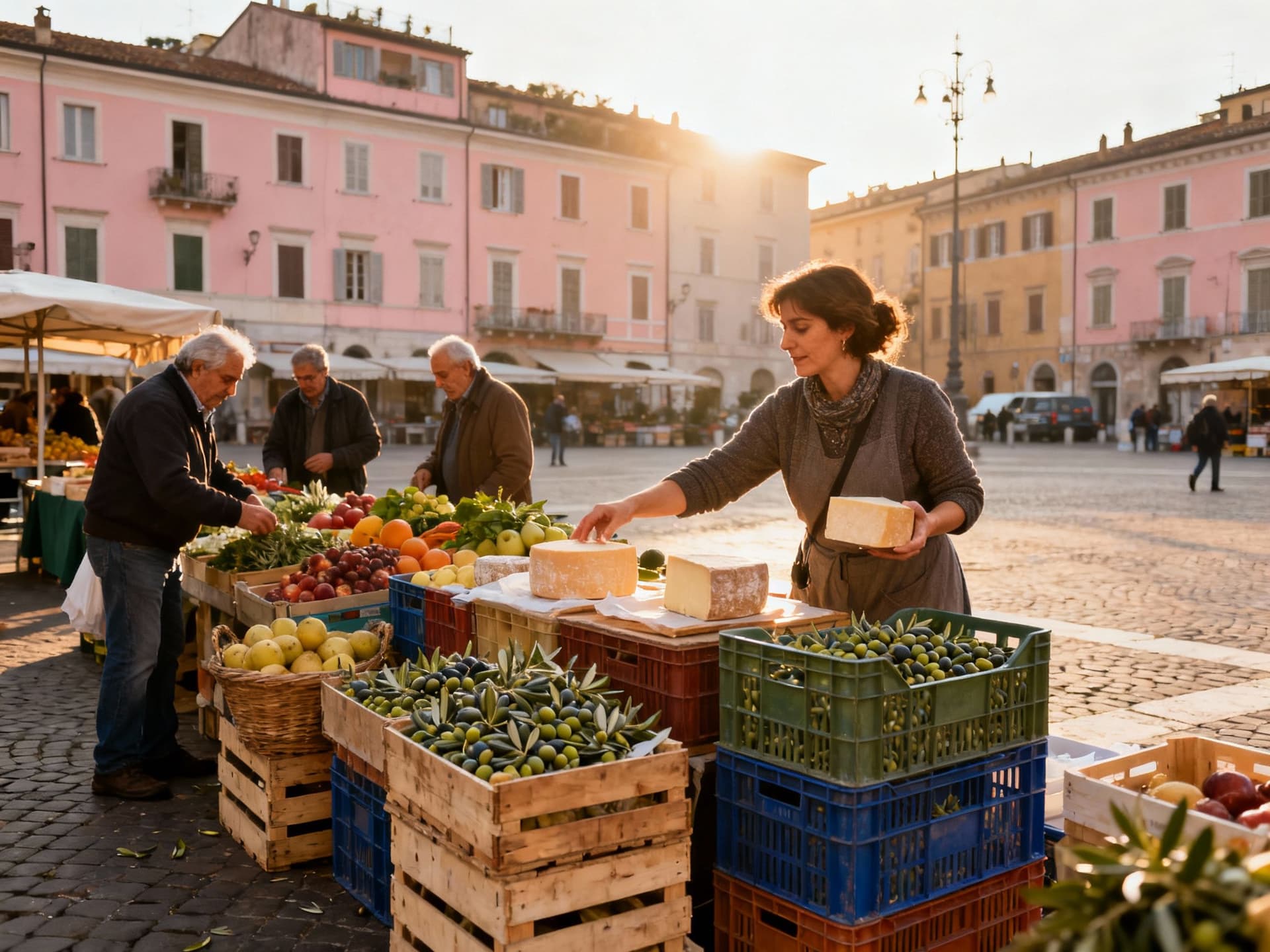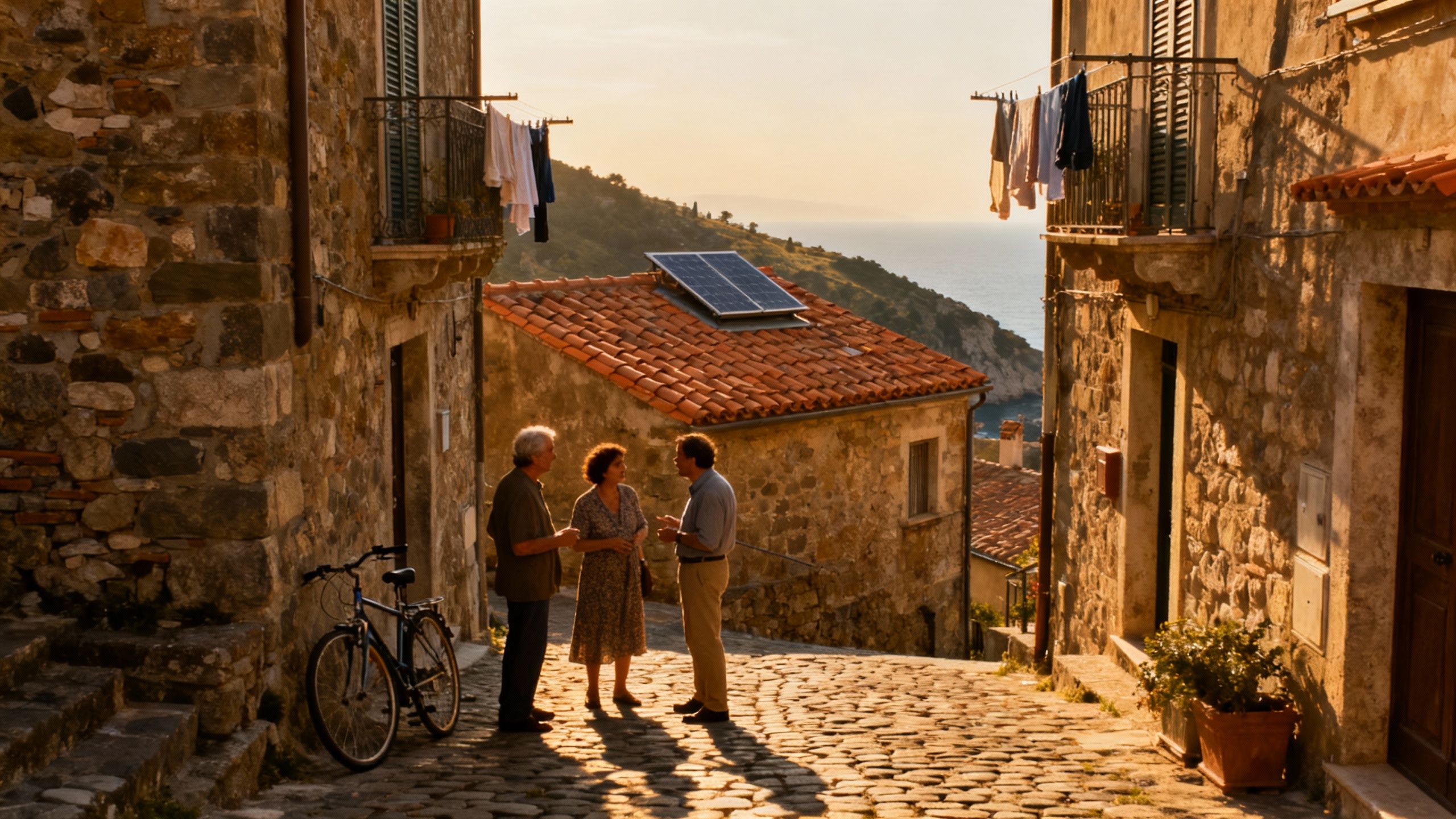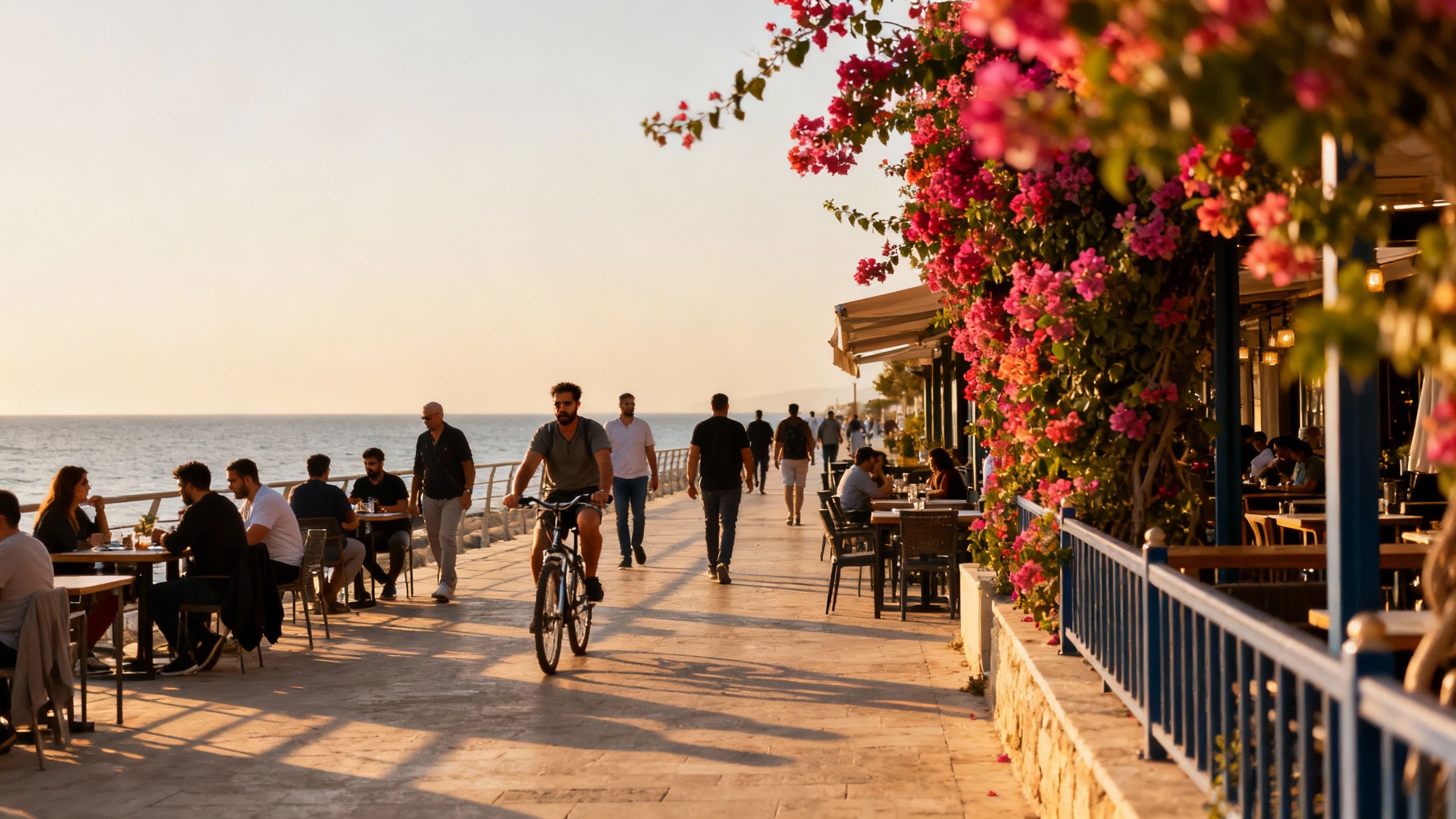Italy: Sun, Stone & Stewardship
Italy’s landscape-led living now pairs sun and stone: fast solar growth and regional green plans affect where homes hold value and how you’ll live.
Imagine waking to the scent of coffee and rosemary, stepping onto a terracotta balcony that faces olive groves and a distant sea of cypress—this is Italy not as a postcard but as an everyday rhythm. In recent years that rhythm has begun to sync with turbines on ridgelines and glinting solar arrays in the plains; energy is being remade here, quietly changing how homes are valued, used and lived in. For international buyers who prize green infrastructure as much as piazzas and pasta, Italy now offers something rare: landscape-led living where renewables, local craft and seasonal life mingle in the same neighbourhoods.
Living the Italian life, with a green pulse

Italy’s daily life is sensory: espresso pulled at 8am, late-afternoon passeggiata, markets stacked with produce and salted anchovies, and conversations that fold around food. Layered on top of that is a renewed focus on place-based energy — rooftop solar across village roofs, community energy projects in plain sight, and regional plans for wind and sun that shape how land is used. That combination means buying here is less about acquiring a view and more about joining a living system: your roof can power your home and your neighbourhood, your garden can support biodiversity, and the pace of seasons decides what you eat and who you meet.
Tuscany and the small-town slow life
Picture Pienza’s stone lanes and farmhouse terraces ringed by olive trees. Tuscany pairs centuries-old masonry with a growing appetite for sensitive retrofits—insulation, heat pumps and discreet solar. Buyers who choose hilltop communes find cafes like La Buca del Sambuco, small vineyards run by families, and municipal plans that favour restoration over demolition. The result is homes that feel rooted and increasingly energy-savvy without losing their patina.
Puglia and Sicily: sun, stone and solar opportunity
In Puglia’s trulli lanes and Sicily’s red-earth coasts the sun is part of daily life and of infrastructure planning. Large-scale and rooftop solar projects have accelerated across southern regions, making these areas attractive to buyers who imagine a self-sufficient summer home and lower running costs year-round. Yet this growth is region-specific: utility-scale approvals concentrate in places like Sicily and Puglia, so local planning and neighbour relations matter when you imagine panels on agricultural land or community arrays.
- Lifestyle highlights to taste the place
- Morning espresso at Caffè Florian in Venice or a market stall in Campo de’ Fiori (Rome); weekly farmers’ markets in Lucca and Matera’s Sassi food stalls.
- Cycling olive-terraced lanes in Puglia, wind-swept coastal walks near Sicily’s Scala dei Turchi, and small vineyards in Chianti offering harvest invites.
- Evening passeggiata in Liguria’s harbour towns, rooftop dinners lit by low-energy LED strings, and community aperitivo nights where neighbours swap surplus vegetables.
Making the move: lifestyle needs meet property reality

That dreamy day-to-day has practical implications. If you want a house that lives lightly on the land, your search must consider regional green plans, grid connections for solar, and the real costs of sympathetic renovations. Italy’s energy transition is fast: in 2024 the country added several gigawatts of solar capacity and utility-scale projects surged in particular regions, which changes both landscape and value dynamics for homes nearby. Understanding where infrastructure is developing — and where conservation rules are tight — is now part of lifestyle matching.
Property styles and what they mean for living sustainably
Stone farmhouses (casali) invite thermal mass strategies: thick walls, night-time ventilation and modest mechanical upgrades. Coastal apartments benefit from cross-ventilation and modest solar on terraces. Newer northern builds often include district heating or heat-pump-ready systems. Match the building fabric to the green upgrades you want: some traditional homes reward patience and craftsmanship; others need careful retrofitting to reach modern comfort without losing character.
Working with agencies who understand green place-making
Choose agencies that can speak to both lifestyle and infrastructure: those who know local planning offices, common energy cooperatives, Superbonus-era retrofit legacies, and the permitting realities around agricultural land and solar. A good agent will translate a neighbourhood’s seasonal rhythm into practical trade-offs—when a place is vibrant in summer but quiet in winter, what does that mean for year-round living versus holiday rental income?
- Steps to blend lifestyle and pragmatics
- 1) Visit across seasons—spend a week in high and low season to feel real rhythms.
- 2) Ask for energy maps—request recent grid and planning maps to see approved PV/wind projects near your target.
- 3) Prioritise fabric first—tightening walls and windows often beats over-sized systems for comfort and cost.
- 4) Vet local contractors—find builders experienced in traditional materials and modern green tech.
Insider knowledge: what expats wish they’d known
Expat life here is generous but textured: language is a bridge, not a barrier; neighbours still trade eggs and repair skills in many towns; and local rules about land and heritage are strict in ways that can surprise buyers. Many newcomers underestimate how seasonal services (doctors, shops, post) change in winter, or how local politics shapes where a solar array goes. Those realities shape not only comfort but resale and stewardship responsibilities.
Cultural integration, language and community
Learning a little Italian goes a long way—neighbors reward effort, and municipal offices speak faster when you try. Join market mornings, volunteer in festa planning, and you’ll discover how much local networks accelerate projects: getting permits, finding craftsmen, or negotiating a solar connection becomes easier with friendly faces. Sustainable living here is social as well as technical.
Long-term stewardship and what to expect
Think of your purchase as a fifteen-year relationship: climate trends, shifting tourism seasons, and regional renewable projects will reshape energy costs and sometimes neighbourhood character. Properties upgraded for energy efficiency tend to hold value better; in fact recent markets show premiums for energy-efficient homes. If you plan to rent, check local short-term rental rules—some towns cap days or regulate licensing to protect community life.
Market facts to anchor your choice
Authoritative sources show Italy’s solar rollout accelerated in 2024, with regional clusters in Lombardy, Lazio, Puglia and Sicily—an important backdrop when you consider property location and grid stress.
- Real-estate realities to keep in mind
- Prices vary dramatically: northern city cores (Milan, Venice, Florence) command premium levels, while Puglia, Sicily and parts of the south offer space and affordability—often with better solar yield potential.
Three practical red flags
- 1) Agricultural-land restrictions: some regional rules limit solar on farmland—don’t assume panels can go anywhere.
- 2) Heritage protections: listed roofs and façades often require specialist retrofits and approvals.
- 3) Seasonal service drops: remote towns can reduce services in winter, affecting comfort and rental viability.
Conclusion: If your dream is an Italian life that honours landscape and seasons, Italy now makes that dream technically possible in new ways. The country’s rapid solar growth and regional green planning mean your home can be both beautiful and materially lighter on the planet. Bring curiosity, local partners who know both craft and grid, and a readiness to live at the tempo of place. Start by visiting your top two towns across different seasons, asking agents for recent energy and planning maps, and meeting local builders—then let the land and community teach you the rest.
Dutch property strategist who helped 200+ families find sustainable homes in southern Europe; expert in legal pathways and long-term stewardship.


